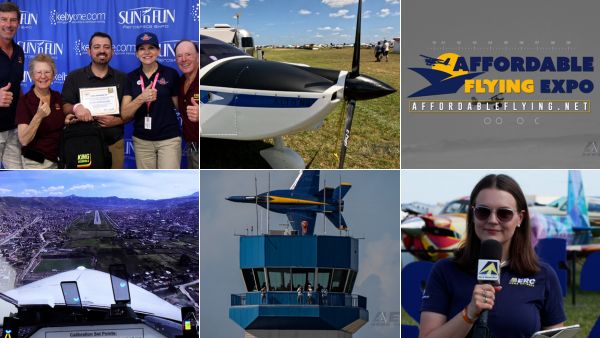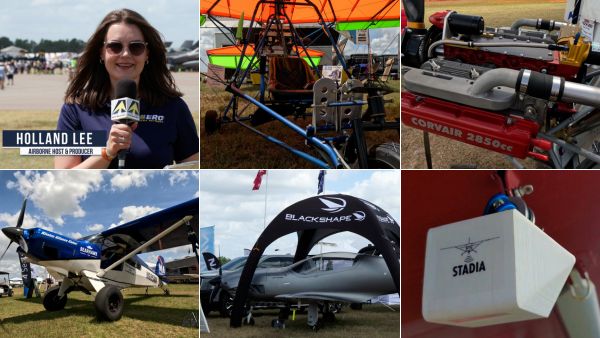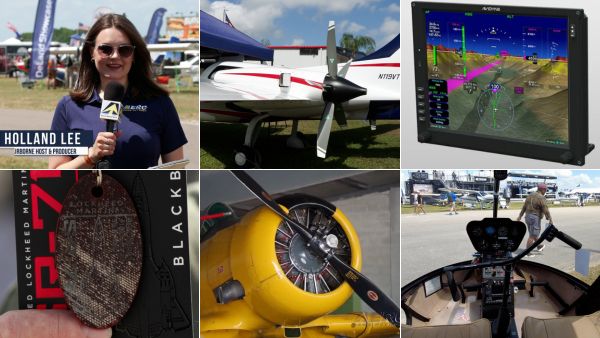The Airplanes Improve Dramatically, but The Industry Still Has A Lot Of Soul-Searching To Do
Analysis/Opinion by ANN Editor-In-Chief Jim Campbell
While perusing the flyways and byways of this year’s Sebring Sport Aviation Expo, I cannot help but be impressed that the “Best Of The Breed” among the LSA community continues to not only show improvement but (in some cases), quite remarkable improvement.
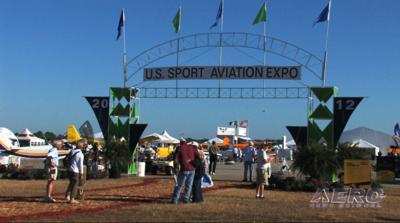
ANN attended this year's event with a great deal of hope and optimism, based on several weeks of conversations with a number of the companies that were bringing products to display this year, and based on a lot of information that we've been compiling over the last many months as we continue to research and create the next generation of the SportPlane Resource Guide.
Let me summarize the state of this industry, what's good is very good (and getting better)… and what's not so good is better than it used to be. Still; way too many of the manufacturers and dealers, themselves, continue to show a stunning lack of salesmanship, marketing, and professionalism. One REALLY wonders what activity might result if the industry learned some lessons about the art and craft of sales and marketing… I suspect that the results would be impressive.
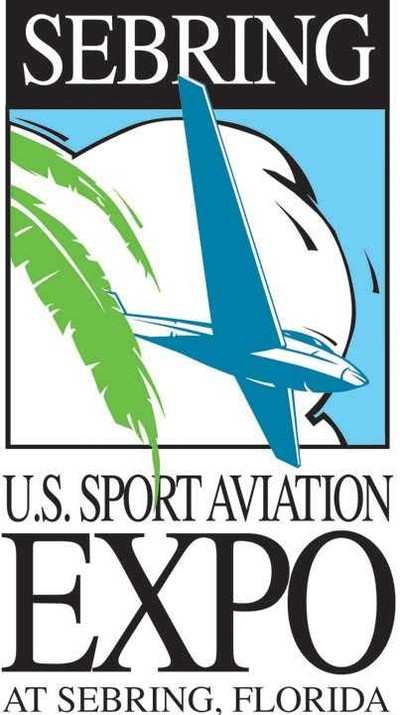
Nonetheless; I'm pleased to say that the overall health of the industry seems to be trending positively, that more of the manufacturers seem to be getting their act together, and that the overall quality of the industry’s aircraft has never been better. There were a number of new products on display, a few of them showed tremendous potential for the future, and one or two, possibly three, could be game changers down the line.
All that being said, we remain stunned and disappointed with the fact that so many of the manufacturers came all the way to Sebring with great planes and products… and yet still had no clue as to how to tell the public what they had, how they could get it, or even engage in basic salesmanship in order to try to turn a lookie-loo into a potential customer. Our Dave Juwel has pontificated on this problem at great length (and has a hard time getting people to listen… foolish, that… Dave knows what he’s talking about), but the contrasts this year are a bit more noticeable because a few of the manufacturers got their act together with one or two of them getting quite good at showing tremendous professionalism -- so the resultant difference between the pros and amateurs has never been greater – and sadly, there is more of the latter than the former.
One thing that definitely improved this year, though, was the overall quality of the fly-in itself. We've had a couple of critical things to say about how Sebring conducted itself in the past, especially as the organization grew from an almost all-volunteer fly-in (with excellent guidance from Robert Woods) to an entity with a more directed, businesslike approach…
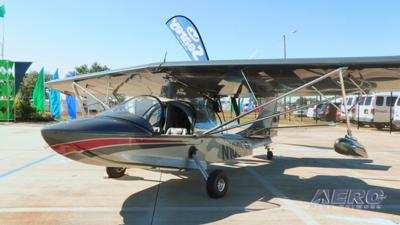
But this year the event matured very well and shows signs of more for the future. While not without its occasional blemishes, there is no question that, this year, Sebring showed that they can play with the big boys, and the result is that while we may have worried a bit in the past, our concerns about the future of Sebring are quite mollified by the fact that the adults now seem to be in charge and they're doing a damn good job of it.
We’re particularly glad to see this event achieve a positive footing because the advance buzz on the upcoming event at Lakeland is getting more ponderous by the day… with more companies talking about passing it by, more attendees deciding not to waste their time and money and the same stupid shenanigans and poor leadership every bit as evident now as it has been in the past. What a shame.
We also had the opportunity this year to spend a little bit more time with some of the folks that came to Sebring to look for an airplane, and while their complaints about the overall allure of LSA ownership have not changed (mostly… that the birds are still too damned expensive), it's obvious that LSA is starting to show itself in a somewhat better light. I think the main reason for this is the fact that the stereotypical general aviation bird has priced itself to such a stunning and unacceptable height and some of the companies have so embarrassed themselves (ever-so-disreputable Cirrus, in particular), that the $100-$150,000 LSA price-tag doesn't seem quite as startling as it used to. I find that quite sad… And while a few of the GA manufacturers are putting up a good fight to stay alive in a bad economy (Diamond and Piper, in particular), the current GA pricing structure bodes ill for anyone who wants to justify an airplane purchase at this time.
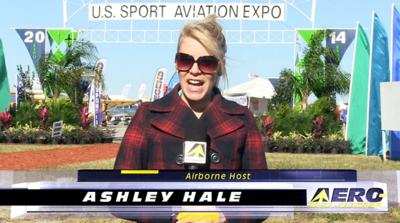
Okay… Let's talk about the high points. The ANN crew, some 10 people strong (as usual, the largest AND most expert crew to cover such events), had plenty to do and this year we spent far more time in the air than we've been able to do in the past. We shot a tremendous amount of video, we conducted dozens of interviews, we researched quite a few stories, and we did a tremendous amount of research and preparation for this year's release of the first volumes of the SportPlane Resource Guide. And while we do have a subtly positive outlook for the future of LSA and sport aviation, it's pretty obvious to us that a solid source of information has never been needed more by those who are looking to enter the sport aviation arena. There’s still way too much hype, way too much nonsense, and way too many amateurs trying to play instant expert in the so-called aviation media… And they're making a mockery of the industry. There are pundits out there trying to write about the industry that
couldn’t spell LSA a few years ago and once turned their noses up at the thought… and now they’re trying to convince everyone that they are qualified to judge and evaluate it…
Bull Feathers.
But I digress…
Oh yeah, the high points… This year we had a chance to sample some new engines, spend a lot more time with a couple of pivotal avionics platforms, and fly a number of new airplanes… And we've never been more impressed.
REALLY.
We got the chance to finally fly one of the latest UL Power engines, in this case a UL 350 IS, of some 130 hp mounted on the front of a Zenith CH 750 Cruzer and found the experience to be an overtly positive one.
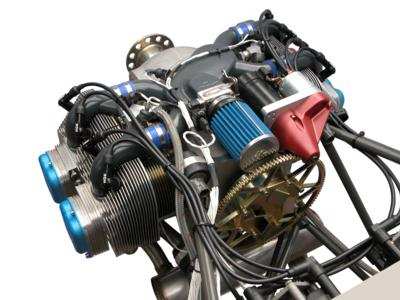
The engine ran cool (albeit in cool conditions), smooth (like a sewing machine…), seems to be producing all the horsepower advertised, and conversations with the leadership of UL Power indicate to us that Rotax finally has some worthy competition. I find that particularly hopeful, not because we have anything against Rotax, but because competition leads to innovation, better value, and ultimately far more satisfied customers. We also had the chance to take a look and even operate (on the ground), a four cylinder 97 hp D-Motor engine that will be imported from Belgium and assembled in the United States by Renegade Light Sport. A test stand was set up on the grounds of Sebring and run numerous times throughout the week, which when coupled with the rep the four-cylinder engine has gotten overseas operations, and some of the data we collected at Sebring, allows us to hope that there may be yet one more powerplant player of note. The four-cylinder D-Motor shows tremendous potential, is uncommonly
small in overall dimension, fairly lightweight, and reportedly quite cost competitive. A six cylinder 130 hp engine is also in the works and the first prototype (not yet running), was on display as well. We will keep an eye on this development -- as we like the looks of this platform a great deal.
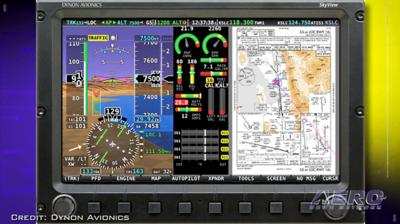
We spent quite a bit of time flying various airplanes, most often equipped with the latest version of Dynon's glass panel cockpit and came away tremendously impressed. Dynon’s market penetration is significant… and seems to be giving Garmin fits. I was particularly enamored with the overall screen methodology, its traffic alerting (which got a workout around the Sebring airport that week), and the system’s readability in highly prejudicial lighting conditions. Overall, Dynon is an example of just how powerful the ASTM/industry consensus process can be when the industry tries to get its act together outside of FAA interference. In other words… for much of sport and general aviation, this is yet more proof that we don’t ‘need no stinkin’ FAA…’
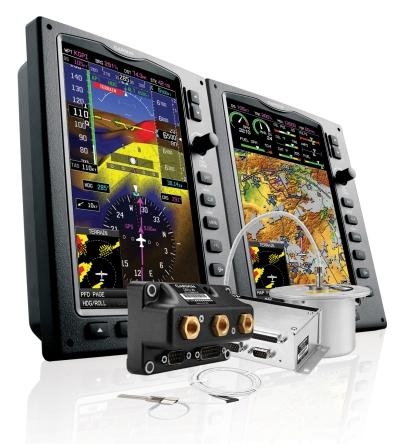
We also had the chance to fly, again, with examples of Garmin's G3 X system, including an absolutely stunning cockpit in Tecnam’s P-2008 Turbo, complete with three screens and more capability than any LSA we’ve seen before (heck, the early Space Shuttle cockpits didn’t look this slick). Garmin has done an exemplary job of putting together a basic glass cockpit system for sport aviation, most probably because they needed to do so in order to remain remotely competitive in the entry-level of aviation against the likes of MGL, Dynon, GRT and the rest, but the G3X system is exceedingly well-done. Overall; the LSA glass cockpit biz is in good shape… with offerings from MGL (which has our vote for some of the most beautiful and customizable screens in the biz) and GRT also showing off the fact that the sport aviation electronics industry can do amazing things WITHOUT the FAA (get the hint?).
There are a number of airplanes that have matured very well this year. We had the chance to fly a full production version of Van’s Aircraft RV-12…
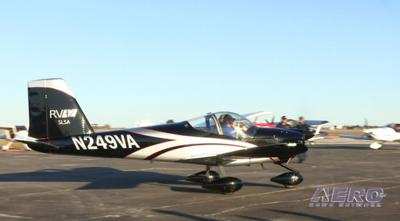
And if there is an overall better value, better flying, more impressive production LSA, I'd be hard put to name it. This bird rocks. There are airplanes out there that are better than an RV-12 in one form or fashion or another, but the complete RV-12 is about the best value we have seen, so far – qualitatively and quantitatively, in the LSA landscape. The airplane handles exceptionally well. Its performance maximizes the definition of LSA. It is produced by a company with an extraordinary amount of expertise in the sport aviation arena (there are more RVs flying than some nation’s entire aviation fleets), and Van’s participation in the LSA segment gives us more hope for the future of this segment of the industry then Cessna's abortive entry into the market did several years ago. And it is our feeling that Van’s will far outlast Cessna's temporary experiment in sport aviation by many, many, many years. Best of all, the RV-12 is just plain old fun to fly and has enough of the RV
temperament to make it attractive to anyone from the sport or general aviation marketplace. The production RV-12 is a stunning value and should go a LONG way to refuting the ‘toy’ rep that so many early LSAs gave the industry…
I have gotten quite a few comments, requests, and questions about a modified version of Zenith CH 750, called the Cruzer – and so was most happy to get my hands on it. The Cruzer was designed to offer most of the STOL capabilities of the old 750, but with a modified wing that allowed it to boast a far greater cruise speed then the slower, full STOL brother that preceded it.
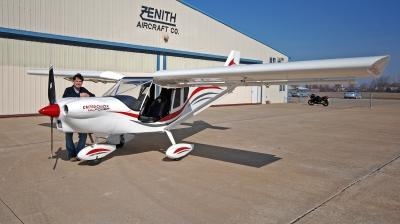
The airplane that results, powered by a firebreathing UL Power 350 EIS (130 ponies… not a one of them housebroken), is a very playful, very responsive, and solid little airplane with an excellent stability and control profile (particularly on the low end), really good visibility, and a very enjoyable nature. The fit and finish of this generation of Zenith SportPlane has come a long way from birds of elder breeding, and the overall effect and value is significant. I was particularly impressed with the fact that the Cruzer retains 85 to 90% of its STOL heritage/capability from the old 701 and 750 series, and can still produce some really short takeoffs and landings. The much greater cruise speed is an excellent benefit and for those who really enjoy STOL capabilities but don't want to take all day getting to point Z, the CH 750 Cruzer seems like an outstanding addition to the Zenith line. I had a ball flying this critter.
One of the more enjoyable reunions in Sebring this year was the chance to get some air time with RANS’ irrepressible Randy Schlitter. It has been several years since Randy and I flew together, and those who know Schlitter even the slightest little bit, know him to be a rather jovial, irreverent and occasionally hysterical guy to fly with.
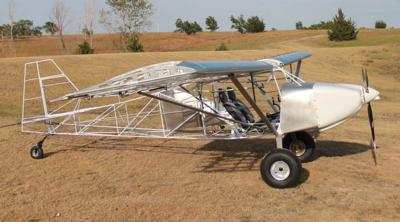
But he's also one of most talented sport aircraft designers in the industry… Concentrating, primarily, on ‘Proper Little Aeroplanes’ that can be built and flown far more cost-effectively than most of the competition, the new RANS S-20 Raven is a breeding experiment boasting certain features of the RANS S-6 and the RANS S-7 with the resultant combination being just plain delightful. Big doors that are easy to get in and out of, lots of baggage room, good in-flight visibility that only suffers a bit on the ground because it is (after all) a taildragger, and a solid stability and control profile that is accompanied by responsive but hardly too-aggressive manners in the air, may turn the S-20 Raven into Randy's best seller yet.
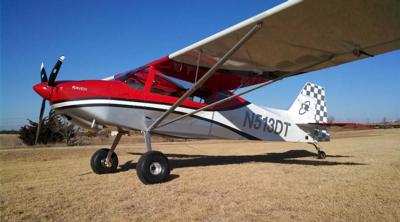
Schlitter has plans for taking this experimental kit aircraft and turning it into an SLSA, but the economics of building what will be an overly simple kit should not be lost on anybody with a little bit of extra time and a slightly thin wallet. I've long been a fan of the fact that the RANS birds are some of the most cost-effective, in either kit-built, or production versions, of most any other aircraft out there… Along with offerings from Kitfox, the Tecnam P92 Echo Classic, and Pipistrel's amazing entry-level Alpha trainer. Be that as it may, I expect the S-20 SLSA to be a very popular seller next year.
A combination of weather and timely access has previously kept me from doing much flying with Barry Pruitt's lavishly adorned Bristell LSA.
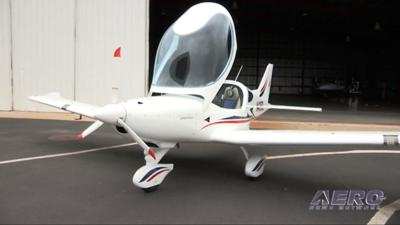
While the vehicle is one of the most pricy of the LSA lot, a quick walk-around shows that this is not your garden-variety LSA, and within minutes of leaving the ground, you can tell that no effort or cost was wasted in creating the Bristell. It has an exceedingly well-mannered stability and control profile, great low-speed manners, it has great visibility, it is tremendously comfortable to sit in, and the overall effect is that if Mercedes were going to build LSA, it would look like and be appointed/equipped like the Bristell. The Bristell is the result of several generations of expert LSA design, the workmanship is exquisite, the fit and finish are tremendously well done, and while the Bristell is going to go out the hangar door for a bit north of $150,000, I don't expect to hear many people claiming that they did NOT get their money’s worth (especially when you see all the equipment and goodies they stuffed into it). There is a market for the upper end of any industry segment, and we have a
feeling that Bristell will be filling that quite well. This is a lovely little airplane with a tremendous amount of panache and a certain amount of (dare I say it?) snob appeal.
I don't know why I was so surprised, but strapping myself into the Tecnam P-2008 was a bit of a shock. I have yet to see/fly anything offered in the LSA community that boasted a better first impression than Tecnam's P-2008 Turbo (with the exception, for different reasons, of the CubCrafters Carbon Cub).
Period.
Folks, this airplane is lavishly appointed, the fit and finish are just simply stunning, and I came away from flying this superb little airplane feeling that this is what everybody expected Cessna to offer when they entered the LSA industry… And why the late and rarely lamented SkyCatcher was, ultimately, so bloody disappointing (NO program had so much potential… and Cessna squandered it… ultimately destroying a great idea).
A fully appointed Tecnam P-2008 Turbo, equipped with a full-boat Garmin G3X glass cockpit, one of the finest interiors I've ever seen in an LSA, and the kind of fit and finish you expect from a bizjet is unfortunately matched with an equally impressive price tag.
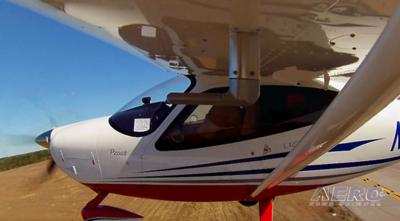
But if you want the best there is, the P-2008 turbo is going to be very hard to beat… And is possibly the reason why two of them literally got sold right off the ramp at Sebring. In the air, the airplane displays exceptional manners, good visibility, excellent ergonomics, truly genteel stability and control, and the kind of behavior you want from a ‘Proper Little Aeroplane.’ Maximizing the performance specifications for today's LSAs, the P-2008 delivers everything the LSA definition promises, and does it with a style and grace that many have attempted but only one or two show the potential of matching. Most of all, the Tecnam legacy in the aviation world is a considerable one, and it's pretty obvious that the amazing history of this aircraft company allows them to produce an equally amazing airplane. We were tremendously impressed with the P-2008 Turbo. And after flying what is their top-end single engine airplane, for the moment (until the Astore starts getting delivered), I am
exceptionally curious to fly their entry-level training aircraft, the P92 Echo Classic and see if this $75,000 trainer meets the potential shown by other members of the family.
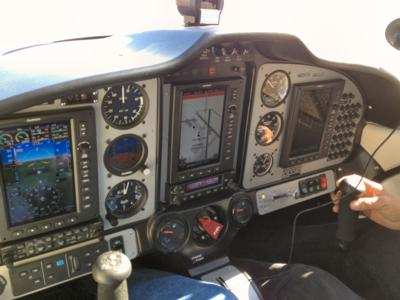
Well… There you have it. A few remarks, with more to come, about why this year’s Sebring was such a positive event for us to report on -- and enjoy. We'll have some more comments and insights about a number of other offerings and companies and planes, shortly… Including the flying of a few birds that are a little closer to ANN’s home base and will be flown over the next few weeks. Overall, it was a good event and a good start for a new year for the LSA community… And we have great hopes to see this trend continue through Oshkosh of this year.
For those of you that are interested, we have been examining what we saw at Sebring very closely in order to produce our annual Best of Breed SportPlane list, which will be released shortly… And, as promised, we will be releasing a much abbreviated, but FREE, version of the SportPlane Resource Guide… A SportPlane MINI-GUIDE if you will, in very short order. We wanted to get to Sebring, see all that we could see, fly all that we could fly, and interview quite a few people before we decided to finalize what we would put in the Mini-Guide.
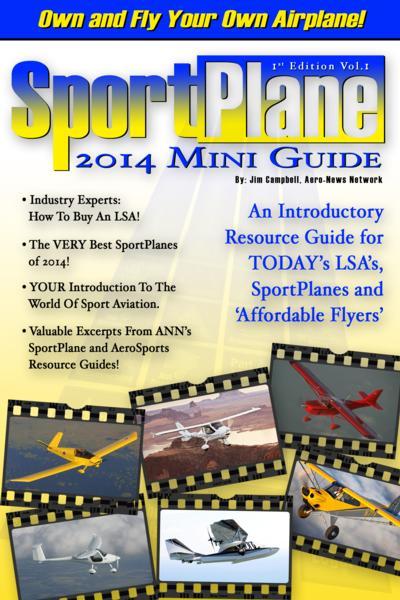
The Mini-Guide is not a substitute for the monstrous SportPlane Resource Guide to come… But it is an opportunity for us to whet your whistle and explain some of the rudiments of the LSA and SportPlane industry for those of you with questions, and get you geared up for the eventual release of the next-generation SportPlane Resource Guide, which we fear will be well in excess of 2000 pages, nearly double what the last one was… But thankfully since all future editions will be e-books, we’re going to be released from the burden of having to carry the bloody things.
A few of our people darned near got hernias several years back just carrying a case of the old SportPlane Guides, so the "zero gravity" version of the SportPlane Resource Guide will be welcome to us indeed.
If you want to get a copy of the free Mini-Guide please send us an e-mail to SPRG–Mini@Aero–news.net and specify your choice of the Kindle version, the EPub version, or the Adobe Acrobat version. We will be happy to send you one as soon as we complete it. I think you’ll get a kick of what we plan now, and in the future, for the SportPlane Resource Guide series and the fact that tens of thousands of the FREE Mini-Guide have already been requested is an excellent indication of how popular and positive the dream of sporty aviation remains for so many of us who simply want to fly.
 Airborne Affordable Flyers 03.27.25: MOSAIC To Miss OSH?, Flight Design, Dynon
Airborne Affordable Flyers 03.27.25: MOSAIC To Miss OSH?, Flight Design, Dynon Bigger, Better, Badder
The 2025 SnF Innovation Preview Is On The Way!
Bigger, Better, Badder
The 2025 SnF Innovation Preview Is On The Way! ANN's Daily Aero-Linx (04.03.25)
ANN's Daily Aero-Linx (04.03.25) ANN's Daily Aero-Term (04.03.25): ICAO Three-Letter Designator (3LD)
ANN's Daily Aero-Term (04.03.25): ICAO Three-Letter Designator (3LD) Aero-News: Quote of the Day (04.03.25)
Aero-News: Quote of the Day (04.03.25)















